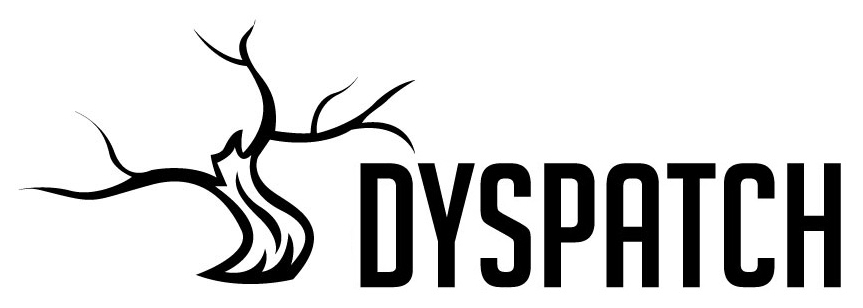Past Campaigns
Since 2015 we have supported over 15 land defense campaigns across North America. Being part of these movements continues to inform everything we do. In 2022, Dyspatch began to shift its support of grassroots land defenders internationally, focusing on Global South communities facing land and resource conflicts, but our history continues to inform our next phase.
Nihígaal bee Iiná (Walk for Existence)
2015. Nihígaal bee Iiná was a group of Diné activists that carried out a series of prayer walks across the Navajo Nation to assert their cultural existence, decolonize, and take action against extractive industries, such as oil and gas, coal, uranium mining, and other forms of exploitation on their ancestral lands. This was the first field support project that Dyspatch carried out and was a formative campaign for all who took part.
Utah tar sands resistance
2015-2017. The Tavaputs Action Council is the outcome of Peaceful Uprising and the Utah Tar Sands Resistance and represents a coalition of grassroots groups that organize and take action to heal the land and intervene in destruction of the Tavaputs Plateau that is taking place as a result of the construction of the first tar sands mine in the United States.
The Utah Tar Sands Resistance has maintained a vigil camp for years adjacent to the mine to monitor and report on activities and the group has carried out numerous actions and field trips to the site over the past six years.
Click here for more information on the Utah Tar Sands Resistance
Predator Trapping - Rocky mountain region
2015-2022. There are over 15,000 predator traps currently in use in the state of Wyoming alone. The purpose of these traps is to "cleanse" ranch land of predators portrayed as a threat to the property of ranchers, cattle.
This long-standing anti-predator culture has perpetuated since settler-colonization of this land and continues to decimate entire populations of coyotes, martin, foxes, bobcat, and the inevitable by-catch of wolves, mountain lion, lynx, and birds of prey such as eagles and owls.
Dyspatch conducts field investigations to document illegal practices in predator trapping and make reports to wildlife authorities. We also support advocacy organizations who are working to end the policies, mentality, and practice of exploitation of these animals.
opposition to the dakota access pipeline
2016. Dyspatch supported the historic movement of indigenous Nations and water protectors against the Dakota Access Pipeline. Throughout this struggle, our solidarity efforts provided research, legal support, materials, and food supplies to the camps.
Standing Rock is now much more than just one pipeline resistance as it represents the culmination of relationship-building and capacity-building over decades. Other movements have emerged from NoDAPL and Dyspatch is committed to the interrelated frontline efforts to resist fossil fuel extraction.
Unist'ot'en Camp
2015-2020. What has been called the largest land defense movement in North America, led by First Nations and accompanied by supporters, numerous land re-occupations in British Columbia have been established to stop extractive industries from threatening the land and people. Unist’ot’en Camp is one of the longest lasting of these.
Dyspatch is part of an ever-growing solidarity network to ally with such efforts and demand free, prior, and informed consent of any use of First Nations territories. On-site support is needed on a regular basis to build communities of resistance and true alternatives.
Lelu Island
2016-2017. The protection of Lelu Island on the Northwest coast of British Columbia is one of the greatest success stories of direct land defense of our era. Five indigenous women originally occupied the island in 2015 just days before it was to be fenced off and construction was to begin on a 13 billion dollar liquefied natural gas export terminal. A long term community effort ensued to prevent leveling of the island and destruction of the Flora Banks, the Skeena River estuary, the most significant salmon hatchery on the West Coast.
Mattole Forest Defense
2017. Since at least the 1990's, Earth First! and other forest defenders have protected this ancient forest made up of old growth Douglas Firs and an entire thriving ecosystem in the most remote part of Northern California, near the King's Range and the Lost Coast. The Humboldt Redwood Company and others have continuously tried to log this area. The Dyspatch Team provided direct support to efforts in this critical coastal forest.
Boulder County Protectors
2017-2020. This local direct action-oriented group is made up of community members that protect the families and environment of Boulder County by taking a stand against all new oil and gas drilling in the County. Boulder County Protectors has carried out multiple imaginative and effective actions targeted at pushing for a "Climate Bill of Rights", which emphasizes the Community Environmental Legal Defense Fund (CELDF) community rights model - that communities have the right to decide.
wild Buffalo defense
2018-2020. Dyspatch supported several campaigns to defend wild Buffalo in and around Yellowstone National Park — Buffalo Field Campaign (BFC) and Wild Buffalo Defense. BFC is one of the longest standing, most well established, yet grassroots environmental protection groups in North America. It works in the field to protect buffalo and on policy change to stop their slaughter.
WBD was a decentralized direct action collective of indigenous and non-native activists dedicated to seeing wild buffalo roam free again and the repatriation of wild buffalo to the first peoples of this continent. WBD took action to intervene in Yellowstone’s slaughter of the buffalo.
Save our st vrain valley campaign
2017-2022. Dyspatch worked on many fronts to stop several proposed mines in the St Vrain River Watershed in Boulder County. To date all mining in the valley has been averted.
Visit the campaign here!










